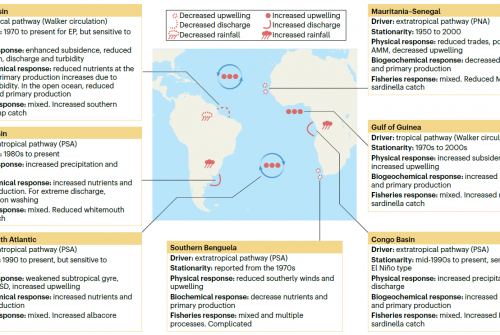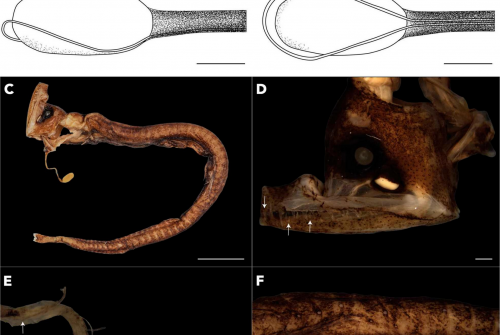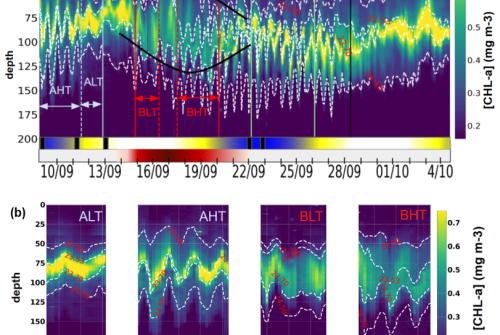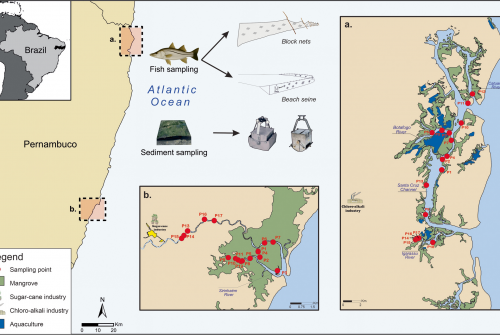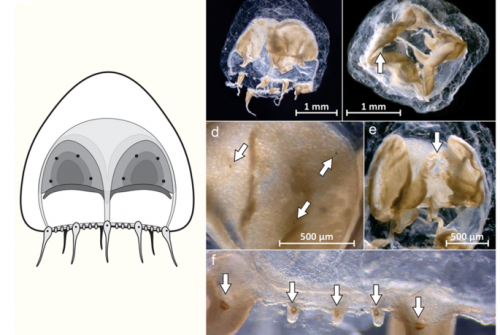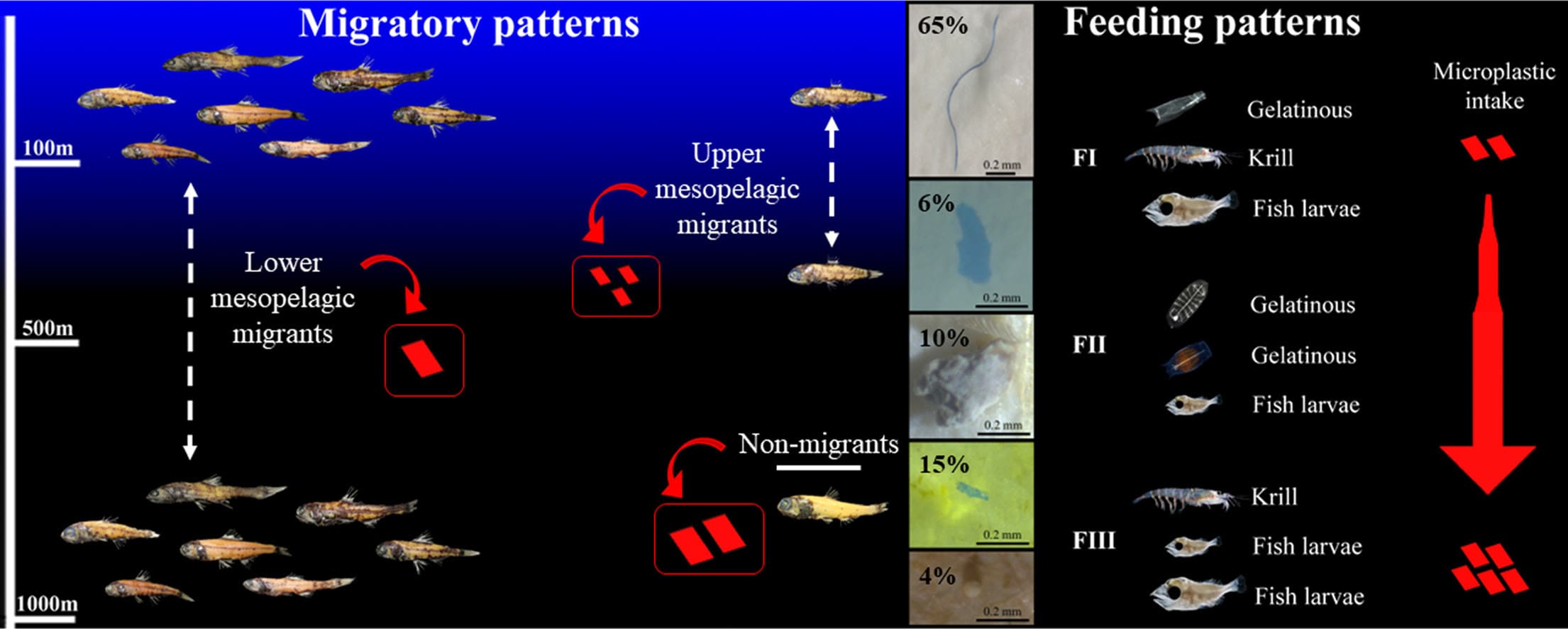
Plastic debris is ubiquitous in the hydrosphere. Yet, we lack an understanding of contamination among deep-sea species and primarily how each trait can influence microplastic intake. We investigated microplastic contamination in the digestive tract of hyper-abundant mesopelagic lanternfishes (n = 364 individuals) from the Southwestern Tropical Atlantic, captured from 90 to 1000 m depth. Overall, microplastics were detected in most individuals analysed (frequency of occurrence = 68 %). Large microplastics, mostly of a filamentous shape were the most frequent, followed by smaller fragments and foams. Microplastics made of high-density polymers (PET, PVC, PA, SBR rubber) were more prevalent than low-density ones (PE, EVA and PBD rubber), especially under deeper layers. Larger microplastics were detected in lanternfishes captured off the northeastern Brazilian coast (mean 0.88 ± SE 0.06 mm) compared to those from around the Rocas Atoll and Fernando de Noronha Archipelago (0.70 ± 0.07 mm; p ≤ 0.05), ∼350 km from the continent. Moreover, lanternfishes that migrate from the upper mesopelagic (200–500 m) to the epipelagic layers (<200 m) had simultaneously the highest intake and the smallest particles (1.65 ± 0.17 particles individual-1 and 0.55 ± 0.07 mm; p ≤ 0.05). Biological mediated transport of microplastics from the epipelagic to the mesopelagic waters was evinced, but fishes foraging in shallower layers had the lowest intake (1.11 ± 0.10 part. ind.-1; p ≤ 0.05). Furthermore, the jaw length was positively associated with an increment in microplastic intake (Incidence Rate Ratio = 1.1; p ≤ 0.05). The lanternfishes that preferably prey upon fish larvae are more prone to microplastic intake than their counterparts, which forage mostly on crustaceans and gelatinous zooplankton (p ≤ 0.05).
DOI: doi.org/10.1016/j.scitotenv.2023.161478
Reference
Ferreira, G. V., Justino, A. K., Eduardo, L. N., Schmidt, N., Martins, J. R., Ménard, F., … & Lucena-Frédou, F. 2023. Influencing factors for microplastic intake in abundant deep-sea lanternfishes (Myctophidae). Science of The Total Environment, 867, 161478.



